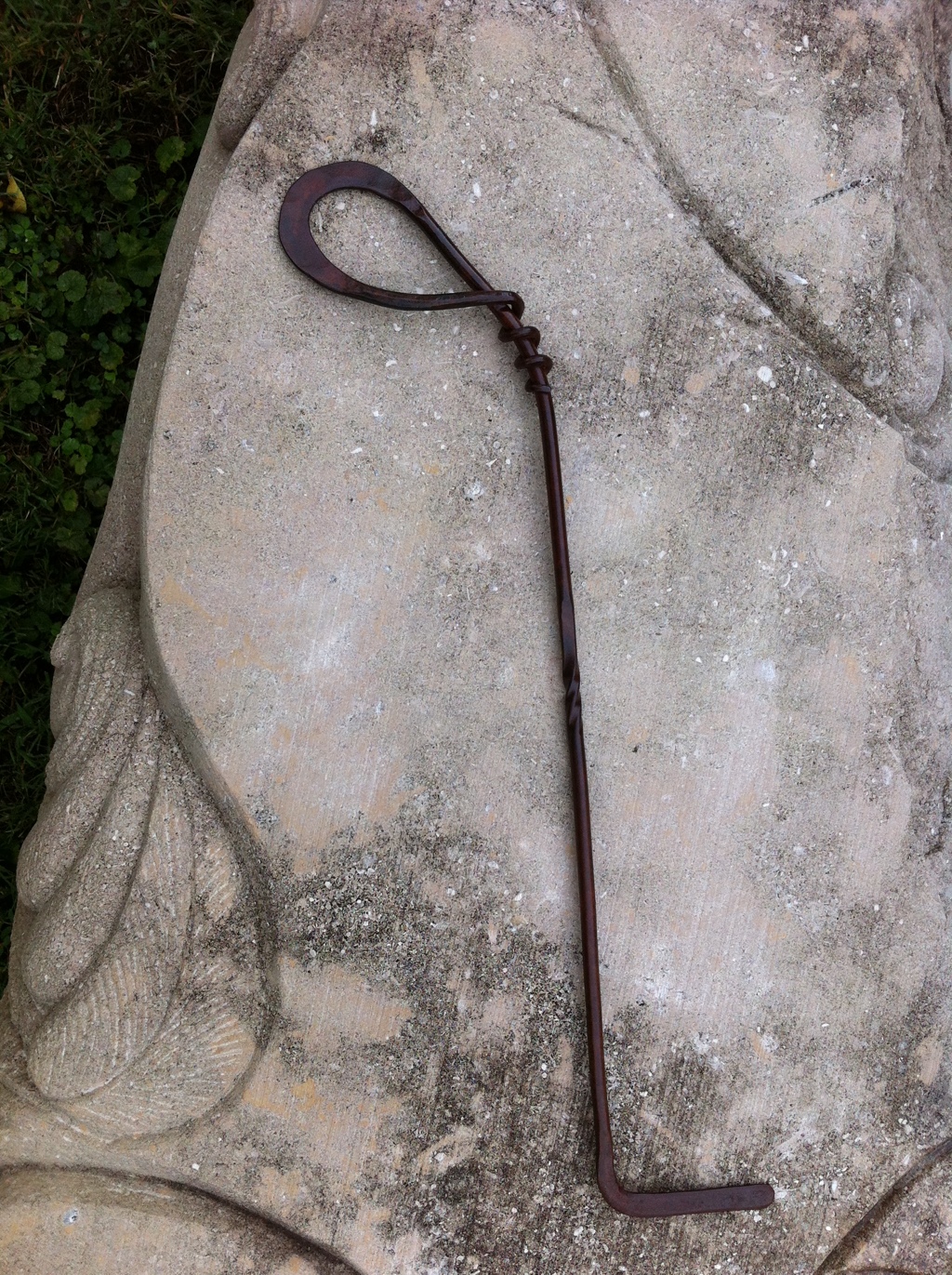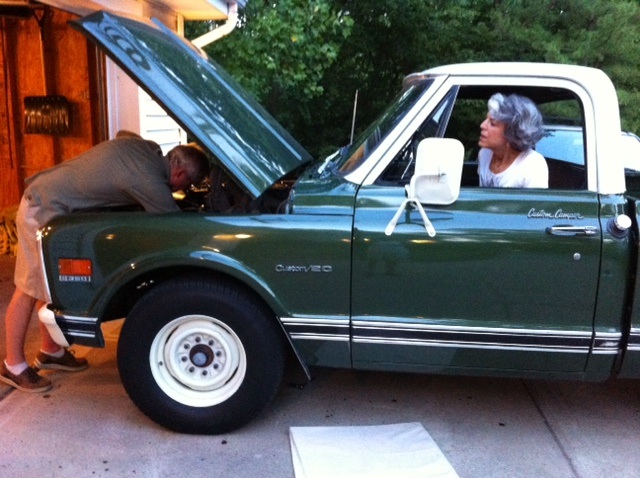
I use these top-bar hive tools a lot at this time of year. They’re terrific for reaching deep into the hive to gently detach brace comb the bees have attached to the side walls.
I’ve hammered the curve in the handles flat in order to pry apart those propolized bars.
I think they’re pretty! I like it when a tool is not only functional but is pretty and feels good in the hand.
I’m hand forging these myself, and I have a few for sale…no two alike. If you’d like one for yourself, contact me for images and pricing (liz@two-honeys.com).
Soon we’ll have the Products section of the website working…which means you won’t need to contact me via email to place your order. It’s a process though, Reader, and right now I’m still deep in bees.













